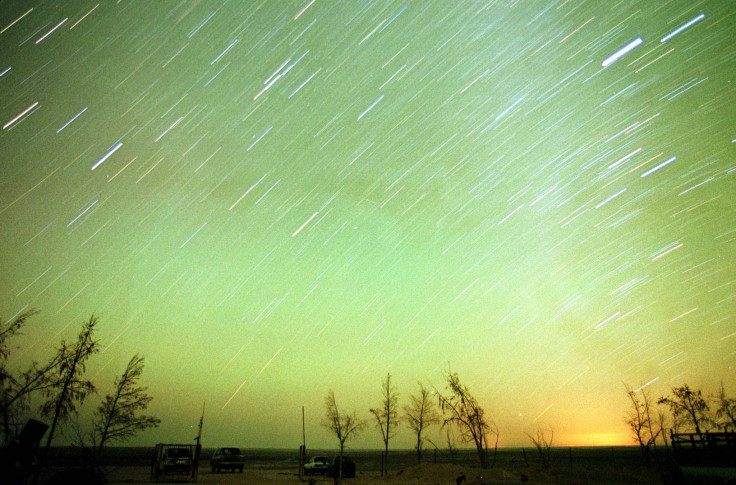Leonids Shower To Peak Thursday Night: Here's Everything You Need To Know
KEY POINTS
- The Leonids are some of the fastest meteor showers
- They are easier to observe from the northern hemisphere
- Every 33 years, Earth experiences a Leonid meteor storm
Leonid meteor showers are set to peak Thursday night, and it is going to be a fabulous night show.
Though skywatchers can watch the Leonids from Nov. 3 to Dec. 2, the night intervening Nov. 17-18 will be the most opportune time to view the event as that is when the meteor showers will peak, according to the Guardian.
While the frequency of the meteors is only about 15 per hour, the Leonids are some of the fastest showers that produce bright and colorful streaks in the night sky.
Moving at 44 miles a second, the Leonids are easier to observe from the northern hemisphere. To increase your chances of viewing the event, find a place isolated from the city or street lights. Also, since the event will last through the night, bundle up well and carry a sleeping bag, blanket, or lawn chair.
The best position to watch the meteors is on your back, facing the east and taking in as much of the sky as possible, as per NASA. About 30 minutes will be needed before your eyes can adjust to the night sky and you can start experiencing the Leonids more clearly.
Every 33 years, Earth experiences a Leonid meteor storm. At that time, at least a thousand meteors hit the Earth's atmosphere every hour, giving the illusion of rain. This time period coincides with the return of the Tempel-Tuttle comet, known to orbit the sun every 33 years.
The Tempel-Tuttle comet gives rise to the Leonids as meteor showers are nothing but residual comet parts and pieces from broken asteroids. When the comet nears the Sun, the dust from the comet forms a trail around its orbit. When Earth crosses through this trail every year, the bits hit our atmosphere to generate bright streaks in the sky.
The last Leonid meteor storm occurred in 2002, and the next one is expected around 2035.
The Comet Tempel-Tuttle was so named as it was discovered independently by two people- Ernst Tempel and Horace Tuttle in 1865 and 1866, respectively. It is a small comet having a nucleus measuring about 2.24 miles.
Meteor showers are named after the constellations from which they appear to radiate. The said constellations are called radiants. The leonids' radiant is the Leo constellation.
However, it is not advised to look directly at the Leo constellation while sky-gazing for the Leonids. The meteors viewed this way will appear short. It would be better to look away from the radiant to up the chances of observing longer streaks across the sky.
The peak of the Leonids will be happening on an evening when the moon won't be as bright, only 36% full. As such, the moon's light won't be much of a distraction, so skywatchers may have excellent views of this sky event.

© Copyright IBTimes 2025. All rights reserved.





















